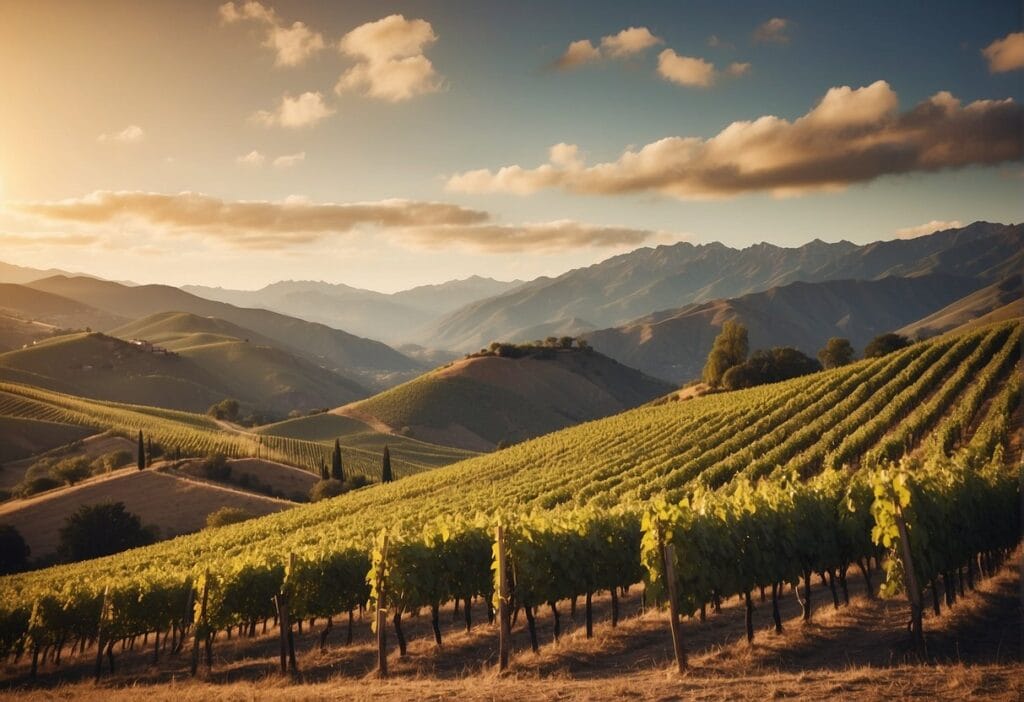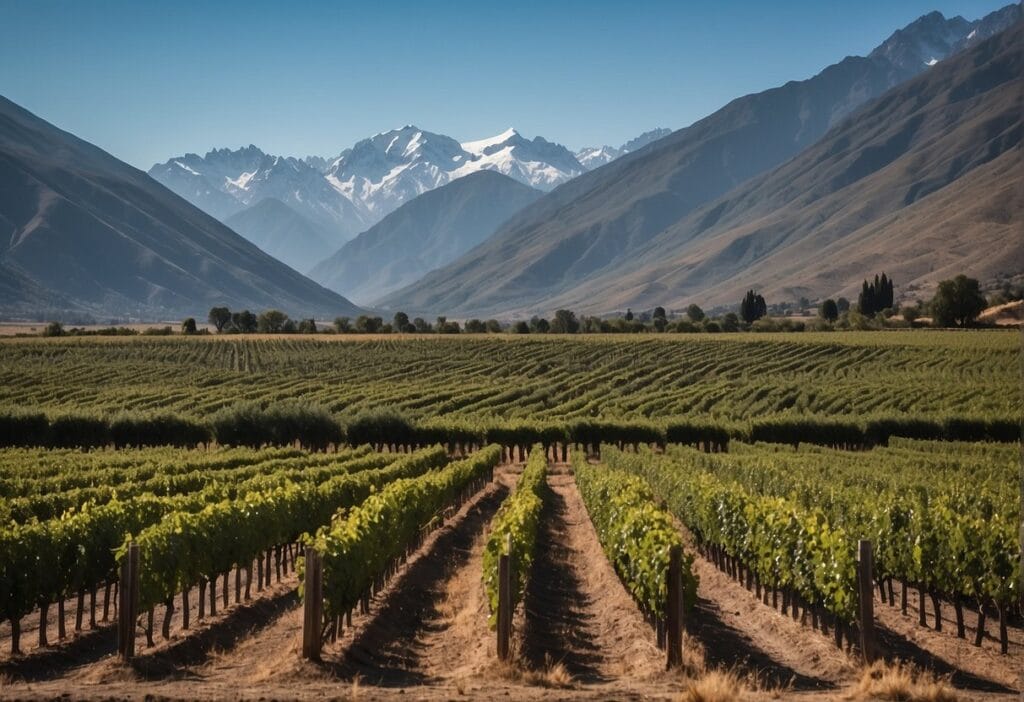Nestled just a short drive northwest of Santiago, Chile, the Casablanca Valley is a renowned wine region celebrated for its premium viticulture. Your discovery of the valley might begin with its cool climate, influenced by the Pacific Ocean, making it an ideal location for producing some of Chile’s best white wines, such as Sauvignon Blanc and Chardonnay.
With its maritime breezes and morning fogs, the region has carved out a niche for its distinct and vibrant flavor profiles that set it apart from warmer wine-growing areas.
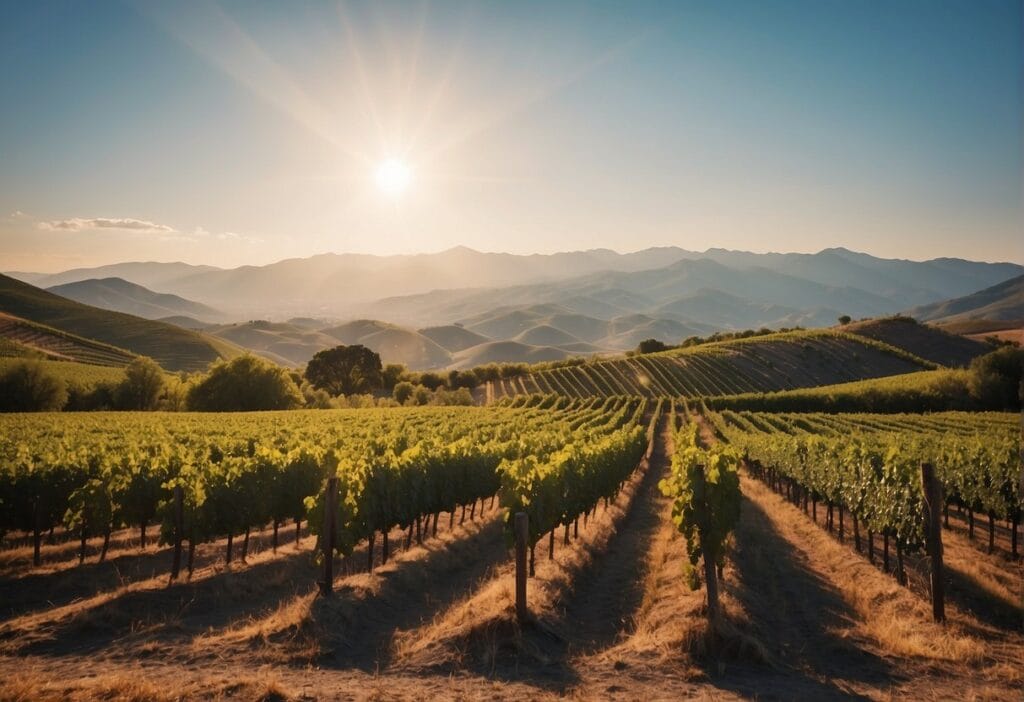
As a lover of fine wines, you’ll find that the Casablanca Valley’s relative youthfulness in the wine industry is contrasted by the impressive strides it has made since the 1980s. The region’s innovation in viticulture and sustainability is evident in the quality and character of the wines produced here.
While touring this picturesque valley, you will not only be swept away by the breathtaking landscapes but also by the warm hospitality offered at its many wineries. Wine tourism thrives here, offering a fusion of taste and culture that beckons connoisseurs and novices alike.
Key Takeaways
- The Casablanca Valley’s cool climate is perfect for producing high-quality white wines.
- Innovations in sustainable viticulture enhance the distinct flavors of the region’s wines.
- The valley offers a rich wine tourism experience with a blend of cultural and enological delights.
History and Geography
Discover the rich tapestry that defines the Casablanca Valley, a name synonymous with premium Chilean wine. Situated just a breath away from the Pacific Ocean and graced by the Andes Mountains, this region boasts a unique climate and geography tailoring a world-class viticultural landscape.
Origins of Casablanca Valley
The Casablanca Valley found its viticultural beginnings in the 1980s, when visionary winemakers realized the potential of its cool climate for producing high-quality wines. Fast forward to today, and the valley, which sprawls across the coastal region near Valparaiso, has become one of Chile’s foremost wine-producing locales, particularly for white varietals.
Geographic Influence
The valley’s proximity to the Pacific Ocean and the Andes Mountains gives it a unique microclimate. Air currents from the cold Humboldt Current flow from the sea and are met by descending cool air from the mountains, creating a temperate climate ideal for viticulture. This geographic interplay also gives birth to the rolling hills characteristic of the region, providing a varied terrain on which vineyards thrive.
Climate and Terroir
The specific climate of the Casablanca Valley, described as a Mediterranean climate, is key to its viticultural success. Characterized by cool morning fog that burns off as the day progresses, it allows grapes to ripen slowly, developing full flavors.
A combination of the local soil, land, and the moderating effects of the sea foster a range of microclimates, letting different grape varieties find their perfect niche within the valley. This harmony between climate and soil, known as terroir, is what viticulturists cherish, for it brings out the distinct qualities in both red and white wines from Casablanca.
The Wines of Casablanca Valley
Nestled comfortably west of Santiago, the Casablanca Valley is renowned for its exceptional white wines and innovative winemaking techniques, which you’ll soon discover offer vibrant flavors and aromas unique to this cool-climate region.
White Wines and Varietals
The Casablanca Valley excels in producing white wines, notably Sauvignon Blanc and Chardonnay, which are among the most prominent grapes grown here. Your palate may also be treated to other white varietals such as Riesling and Viognier, each contributing to the valley’s reputation for white wine excellence. These wines are celebrated for their acidity, minerality, and fruit-driven profiles.
- Sauvignon Blanc: Crisp, with lively citrus notes.
- Chardonnay: Often exhibiting a balance of oak and bright acidity.
- Riesling: Known for its aromatic delicacy and elegance.
- Viognier: A rarer find, with lush floral and stone fruit characteristics.
Red Wines and Varietals
While the Casablanca Valley is widely recognized for whites, you’ll find that it also offers exquisite red wines. Varietals like Pinot Noir, Syrah, Merlot, Cabernet Franc, and Malbec are intricately developed to showcase the valley’s capacity for creating reds with finesse. These reds are characterized by their softer tannins and bright red fruit flavors, a divergence from the traditionally robust Chilean reds.
- Pinot Noir: Light-bodied and aromatic with notes of red berries.
- Syrah: Medium-bodied with spicy accents.
- Merlot & Cabernet Franc: Offering a more herbaceous profile.
- Malbec: Deep, with hints of dark fruit.
Winemaking Techniques
Casablanca Valley winemakers embrace both traditional and modern techniques to bring out the best in their grape varieties. Organic winemaking practices are increasingly popular, reflecting a commitment to sustainability and purity in wine production. The cool coastal climate and morning fog provide a longer growing season, which, combined with careful vineyard management and innovative cellar practices, results in wines of exceptional quality and distinctiveness.
- Organic Practices: Natural and minimally invasive methods.
- Climate & Terroir: Leveraged for optimal grape ripening and expression.
- Innovation in Production: Combining time-honored methods with cutting-edge technology.
Wine Tourism in Casablanca Valley
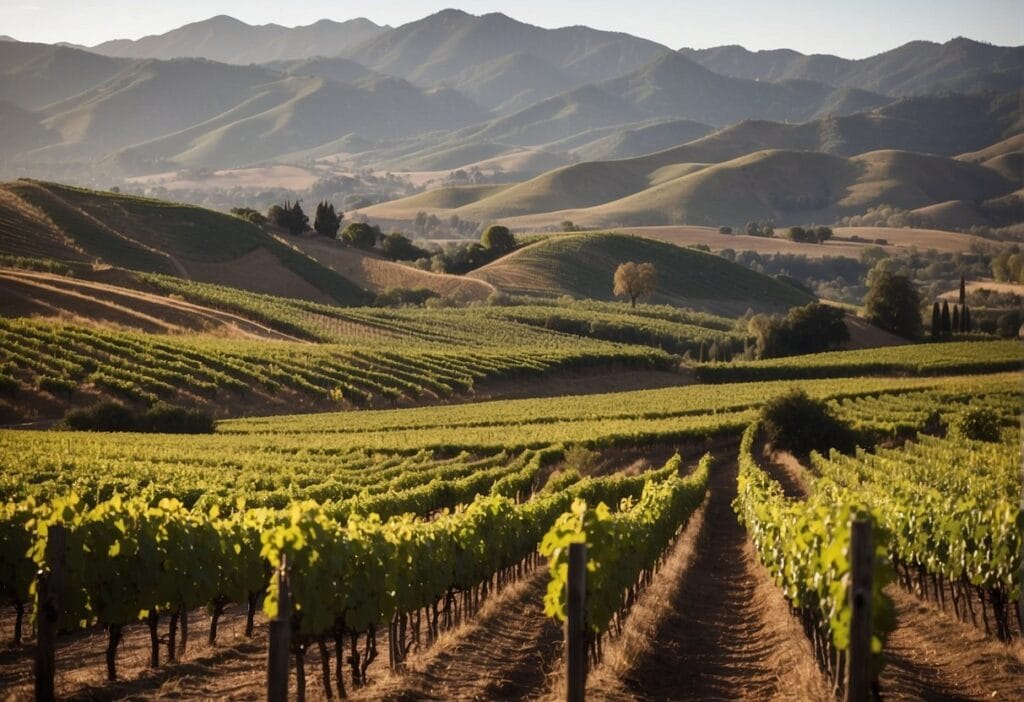
The Casablanca Valley is a paradise for wine enthusiasts, offering a diverse range of wine tour experiences, renowned wineries, and sumptuous local cuisine that perfectly complements its premium wines.
Wine Tour Experiences
Embarking on a wine tour in Casablanca Valley lets you explore picturesque vineyards and taste world-class wines. Guided tours can enhance your experience, providing you with in-depth knowledge of winemaking processes and the valley’s unique terroir. You may choose from a variety of tours, including luxury private tours, group excursions, or even horseback riding through the vineyards.
Wineries to Visit
Casablanca Valley is home to a blend of well-established and boutique wineries that are sure to delight:
- Casas del Bosque: Known for its great wine tasting experiences and beautiful vineyard landscapes.
- William Cole: Specializes in creating elegant, high-quality wines.
- Matetic: Offers biodynamic wines with a focus on sustainability.
- Kingston Family Vineyards: A boutique winery renowned for small-batch production.
- Viñedos Veramonte: Large-scale winery with organic wine offerings.
- Viñamar: Offers a unique sparkling wine experience.
- Loma Larga: Known for its reds and unique cool-climate varieties.
- Indomita: Popular for its modern wine facilities and panoramic views.
- Villard Fine Wines: Prides itself on experimental wine-making techniques.
Visit these wineries to discover why Casablanca Valley is celebrated for its premium wines.
Local Gastronomy
Your wine tour isn’t complete without indulging in the local food that highlights the region’s culinary richness. Many wineries offer gourmet pairings featuring traditional Chilean dishes with a contemporary twist to enhance the tasting experience. From seafood delicacies to hearty meats, the flavors are designed to complement the wines’ profiles, making for an unforgettable gastronomic journey.
Consider planning your visit to Casablanca Valley wineries like Viña Casas Del Bosque or La Recova for a taste of their local offerings along with their exquisite wines.
Viticulture and Sustainability
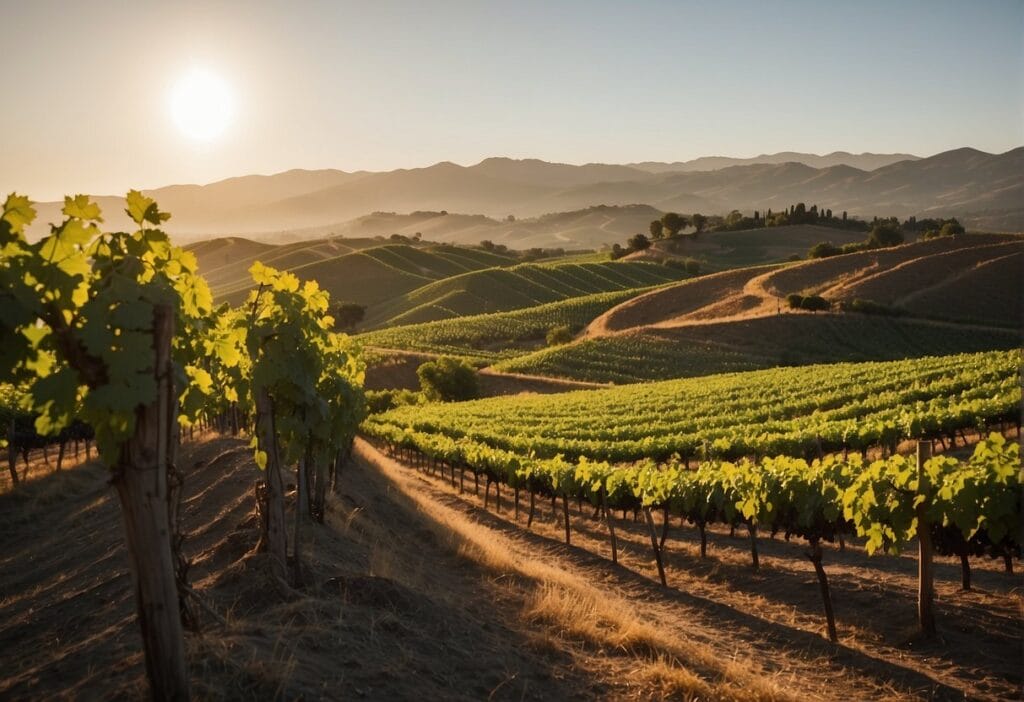
When you explore Casablanca Valley, you uncover a region deeply committed to sustainable viticulture, ensuring the health of the land and the quality of organic wines produced by its passionate growers.
Sustainable Practices
In Casablanca Valley, sustainable practices are not just words; they’re woven into the fabric of every vineyard. Growers here take a holistic approach, focusing on minimizing environmental impact and fostering the health of the land.
- Water Management: Recognizing the scarcity of water, vineyards implement efficient irrigation systems, such as drip irrigation, which conserves water and ensures that each vine receives the precise amount needed to thrive.
- Pest Control: Instead of relying on chemical pesticides, growers often use natural predators to keep harmful insects at bay, fostering a balanced ecosystem within their terroirs.
Many growers in Casablanca Valley have obtained certifications for organic farming. They refrain from using synthetic fertilizers or pesticides, which contributes to producing high-quality organic wines.
By carefully managing resources and protecting the land, growers ensure that the vineyards can continue producing exceptional wines for generations to come. In this way, your enjoyment of a glass of Casablanca Valley wine carries with it a commitment to a greener, more sustainable future.
Economic Impact and the Future
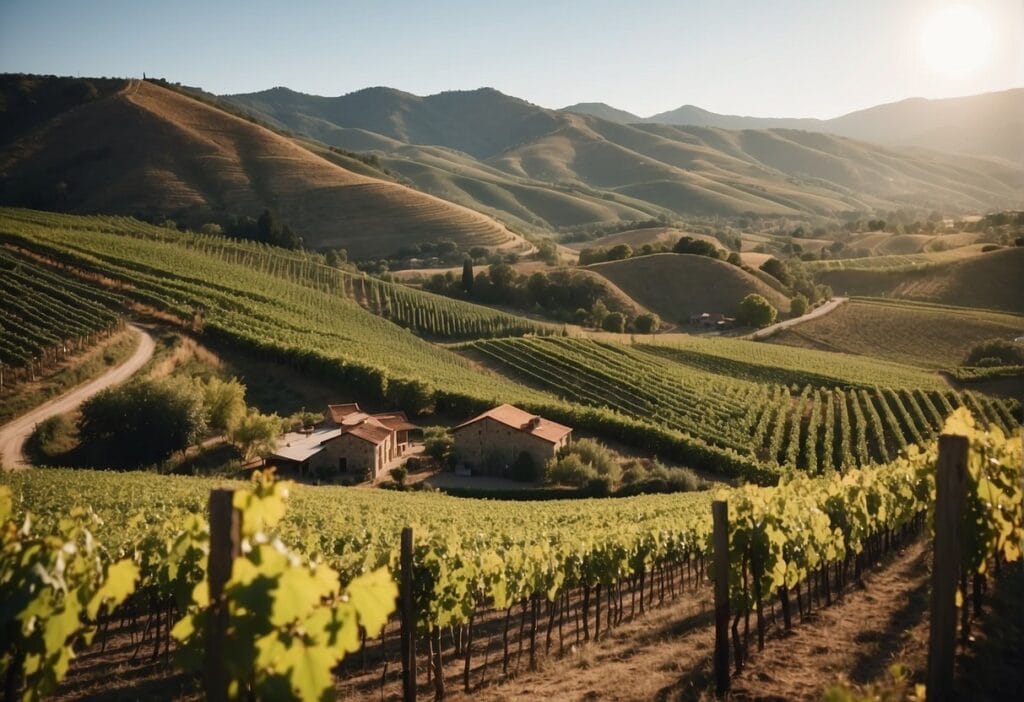
In the Casablanca Valley, a significant transformation has bolstered your understanding of Chile’s economic landscapes, especially in terms of wine production and its evolving market dynamics.
Wine Industry Development
The Casablanca Valley emerged as a hub of activity in Chile’s wine industry, with your attention turning to its economic significance. The region, a relatively small producer by Northern Hemisphere standards, surprises you with its high-export orientation and a reputation for quality. Key grape varietals have established Casablanca not just on the domestic stage but internationally, drawing parallels to the famed production regions like the Maipo Valley.
- Grapes: Predominantly cool-climate varieties thrive here, including Sauvignon Blanc and Chardonnay, which fuel the local economy each spring.
- Economic Impact: The influx of wine tourism, particularly in areas like Viña Del Mar, has led to increased job opportunities and revenue, underscoring the significance of wine in shaping regional fortunes.
Innovation and Expansion
Your experience of Casablanca’s wine industry is marked by its continuous pursuit of innovation and readiness for expansion. New technologies and sustainable practices are adopted to face climate challenges, demonstrating a commitment to future growth.
- Innovation: Techniques aimed at enhancing environmental performance, as seen in collaborative Clean Production Agreements, are gaining momentum among the valley’s businesses and government entities.
- Expansion: The evolving palette of global consumers has set the stage for Casablanca’s wines, once negligible in presence, to now command respect akin to offerings from San Antonio Valley, calling for judicious increases in production areas without compromising the valley’s renowned quality.
As you observe, the Casablanca Valley, through strategic development and a focus on innovative practices, is securing its place as a resilient and forward-thinking player in Chile’s economic tapestry.
Cultural Aspects
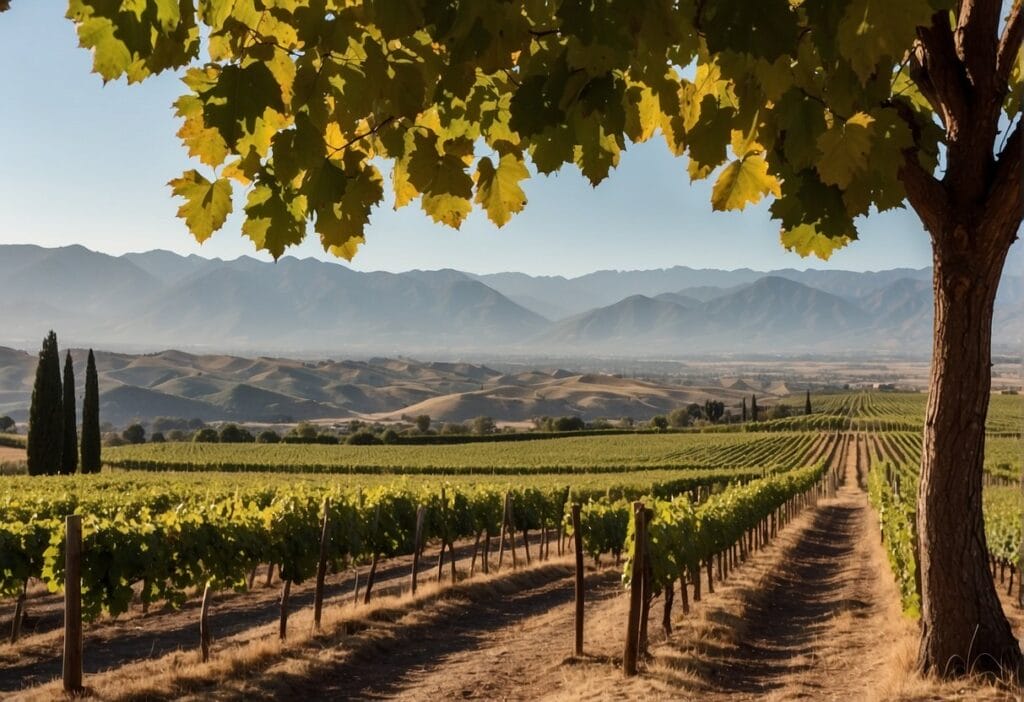
The Casablanca Valley is infused with rich cultural elements that reflect its status as a significant Chilean wine region. You’ll find the heritage celebrated, roles in the wine industry represented, and local traditions intertwined with the winemaking process.
Chilean Wine Heritage
Casablanca Valley is a testament to Chile’s deep-rooted wine heritage. Since its emergence in the mid-1980s, this valley has quickly become synonymous with high-quality Chilean wine. What sets it apart is the combination of a Mediterranean climate and oceanic influence, perfect for producing the region’s signature crisp white wines.
Roles and Representation
In the vineyards and wineries of Casablanca Valley, you’ll witness the evolving roles and representation of women. No longer just supportive figures, women have become instrumental as winemakers, sommeliers, and industry leaders, especially evident during the spring harvest season.
Wine and Local Traditions
Your visit to this valley is not complete without experiencing the local food and traditions that accompany wine culture. In September, locals celebrate the Fiestas Patrias, where wine harmoniously blends with celebrations of Chilean independence. Traditional dances, rodeos, and culinary delights like empanadas and asados make it a vibrant, sensorial feast reflective of the Local Culture.
Frequently Asked Questions
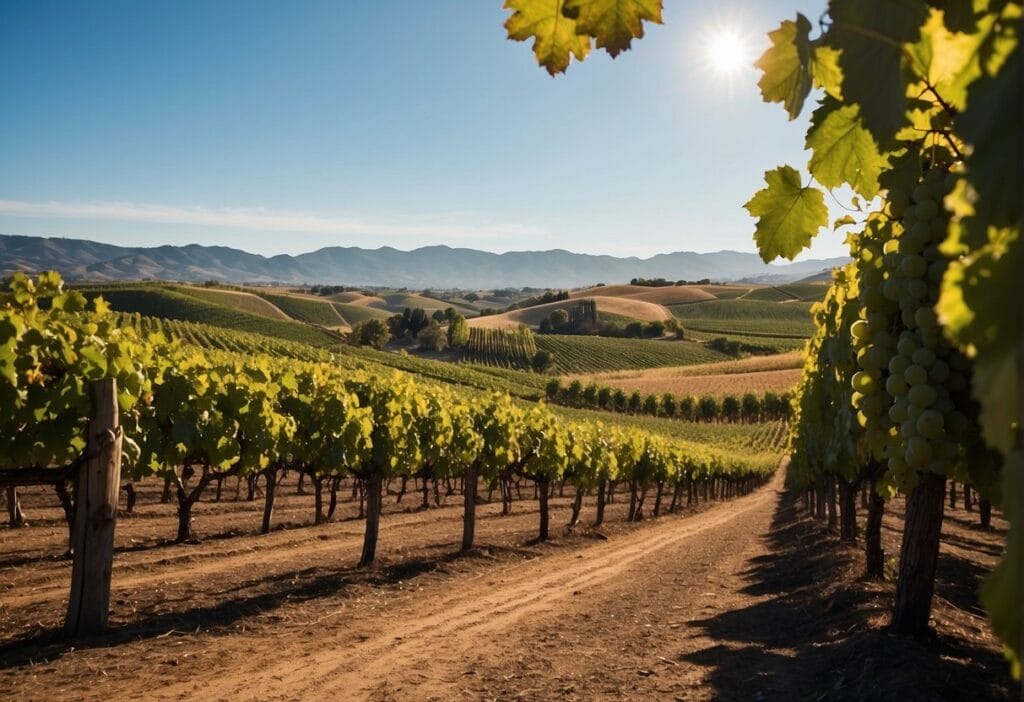
Delving into the Casablanca Valley means exploring a region revered for its exquisite wines and picturesque landscapes. Here’s a quick guide to help you discover what makes this Chilean gem so special.
What types of wine are most prominent in the Casablanca Valley?
The Casablanca Valley is renowned for producing outstanding white wines, particularly Sauvignon Blanc and Chardonnay. These varieties thrive in the valley’s cool climate, giving them a crisp acidity and fresh flavor profile.
What are some recommended tours to experience the wine region of Casablanca Valley?
To truly experience the essence of this region, consider embarking on a guided wine tour. This will not only give you a taste of the valley’s finest wines but also offer an educational glimpse into their winemaking process.
Can you suggest notable restaurants in the Casablanca Valley that offer a taste of the local cuisine?
Yes, the valley is dotted with charming eateries where you can pair local wines with traditional Chilean dishes. Restaurants such as Macerado and House Casa del Vino provide an authentic dining experience with menus designed to complement the lively flavors of the valley’s wines.
What activities and attractions can visitors enjoy in the Casablanca Valley apart from wine tasting?
Aside from wine tasting, you can soak in the natural beauty by going on a horseback riding adventure or hiking through the vineyard-clad hills. The region also boasts a selection of boutique shops and art galleries showcasing local craftsmanship.
What is the best time of year to visit the Casablanca Valley for wine tasting?
To take advantage of the prime season for wine tasting, plan your visit during the harvest season, typically from March to May. This is when the region buzzes with activity and the weather is ideal for exploring the vineyards.
How does the climate of the Casablanca Valley influence its winemaking?
The climate plays a pivotal role in the valley’s winemaking process. The cool coastal breezes and morning fogs create a longer ripening period for grapes, resulting in wines with refined flavors and balanced acidity.
